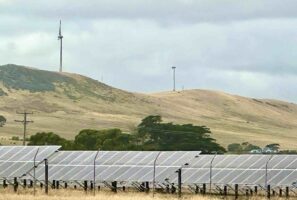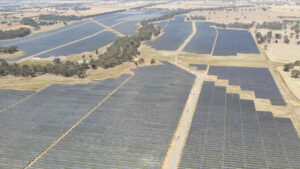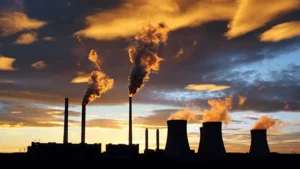 The March 2017 retirement of Victoria’s Hazelwood coal power plant should have a negligible effect on the reliability of the Victorian and South Australian grids, a new report from national electricity market operator AEMO has found.
The March 2017 retirement of Victoria’s Hazelwood coal power plant should have a negligible effect on the reliability of the Victorian and South Australian grids, a new report from national electricity market operator AEMO has found.
Hazelwood’s closure, announced by French parent company Engie earlier this month, will remove 1,600MW – or 13.8 per cent of scheduled and semi-scheduled generation capacity – from Victoria, and cut the surplus generation it has traditionally exported to South Australia.
But in its latest Electricity Statement of Opportunites – an update following Engie’s announcement on Hazelwood three weeks ago – AEMO says that various market responses would be sufficient to easily meet Australia’s uniquely high reliability requirement of meeting demand 99.998% of the time (that is, for all but 11 minutes a year).

The graph above indicates the dotted line that represents the reliability standard. The blue and orange lines below (representing South Australia and Victoria) suggest that reliability standards will be comfortably met if the market responds in the manner expected.
Curiously, AEMO chooses to present its findings upside down. In its update it presents as the first option the scenario that the reliability standards could be breached if the energy market basically sat on its hands after the closure of Hazelwood and did not respond to market signals.
One can imagine that this could be the focus of some mainstream media reports.
Interestingly, even in this extraordinary scenario where no one acted – either through extra generation from black coal generators in NSW, new demand response measures, or even bringing back some mothballed gas generators – the reliability beaches would be minor, extending to some 22 minutes in its worst case scenario in 2017/18 and making negligible impact in subsequent years. See graph below.

As Dylan McConnell, from the Melbourne Energy Institute, points out, the ESOO is not an apocalyptic vision of endless blackouts caused by the impact of renewable energy, even if some vested interests might like to argue that point.
“This is a statement of opportunities,” he notes. Before 2010, he adds, it was a document used regularly by fossil fuel generators to to say “hey look, based on demand projections, we think there is going to be a shortfall of supply in NSW in 5 years.” … Then different companies can see this and start developing projects, etc.
“There wasn’t a great deal of fuss,” McConnell said. “Now people read them (as with the initial 2016 ESOO from earlier this year) and see that there is going to be a shortfall of supply and it’s all renewable energy’s fault. It’s not.”
As the AEMO note says:
This notice period is a key opportunity for NEM participants to respond to the announcement by adjusting their gas and electricity portfolios. The notice period is also valuable from an investment perspective, as it provides an opportunity for supply-side options to emerge.
That means there is plenty of opportunities for participants to develop strategies in demand response, storage, or making plans to generate more from existing plant, or bringing back mothballed plant. And, in any case, all this would dramatically change if the Portland aluminium smelter decided to close – a move that would remove nearly as much demand as is supplied by Hazelwood.
Meanwhile, the Senate Inquiry into planned coal plant closure in Australia is expected to recommend that the nation’s entire remaining coal power fleet be retired within 13 years.
The Senate Inquiry – which was dubbed a “dangerous political stunt” by right wing think-tank the Institute of Public Affairs – was set up by Labor and the Greens to establish the case, and policy, for the orderly exit of coal from the NEM and to provide “a just transition” for affected workers and communities.
The interim report from the Committee is expected to recommend all Australia’s coal-fired power stations close by 2020 and the government establish an energy transition authority to help affected communities through the changes.
The recommendation, while sure to be challenged by the federal Coalition, is in line with the projections and recommendations of a range of industry insiders, experts and analysts, including AGL Energy CEO Andy Vesey. It is also in line with the reality presented by the now locked-in closure of Hazelwood.
Vesey, whose company owns Hazelwood’s neighbouring Loy Yang A coal generator in Victoria’s La Trobe Valley, told the Australian Energy Week 2016 conference in June that AGL was advocating for the orderly exit of plant in Australia, “because the alternative is ugly.”
“(The alternative is) the disorderly exit. And I can tell you, it’s one or the other, because we’re not going to stay where we are,” he said.
The Senate Committee’s recommendation of a 13-year timeline would also be in line with Australia’s commitment to the Paris deal, which it ratified two weeks ago.
As the Climate Institute’s Erwin Jackson himself told the Committee, all of Australia’s remaining coal power stations would need to be closed by the early 2030s to keep to Australia’s emissions reduction commitments, which meant retiring “one Hazelwood a year”.
And the Australian Conservation Foundation agrees.
“This committee’s reported recommendations – a coal retirement plan, a national energy transition authority and assistance for affected communities – are exactly what Australia urgently needs,” it said in a statement on Monday.
“This task cannot be left to the market alone. Closures that are not well planned, such as has happened at Port Augusta and will happen at Hazelwood in the Latrobe Valley next year, can have a damaging impact on communities.
“It is not a matter of if dirty coal will need to be replaced, but when and how.”










